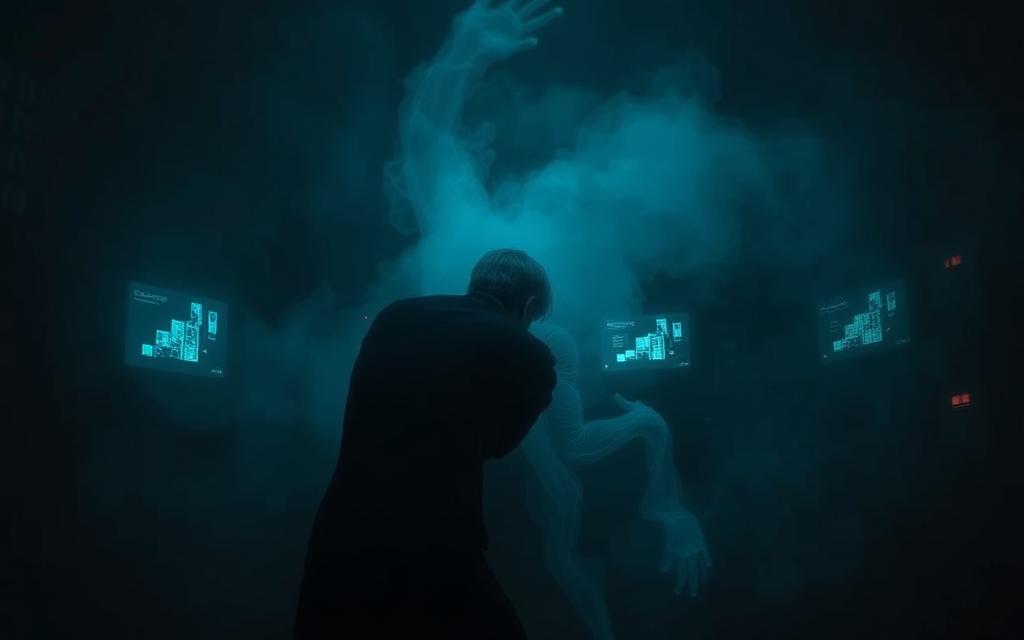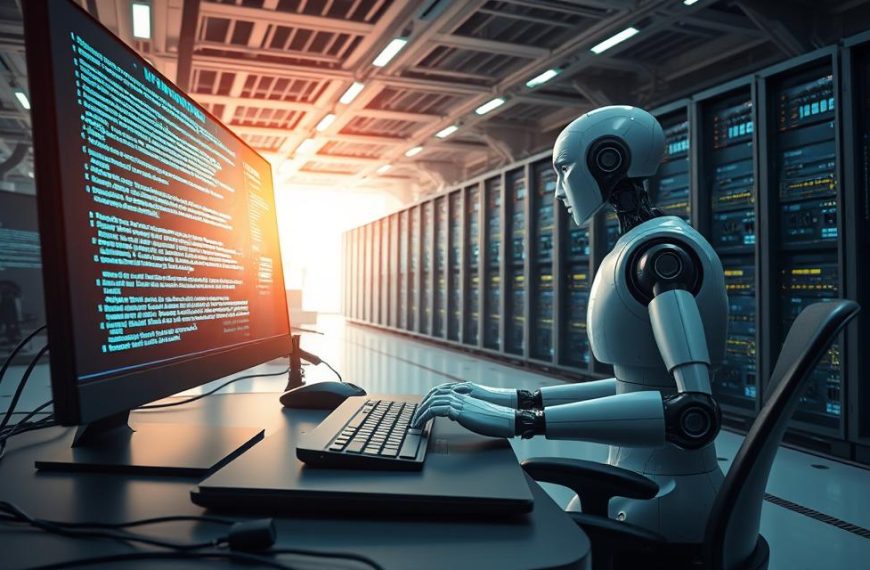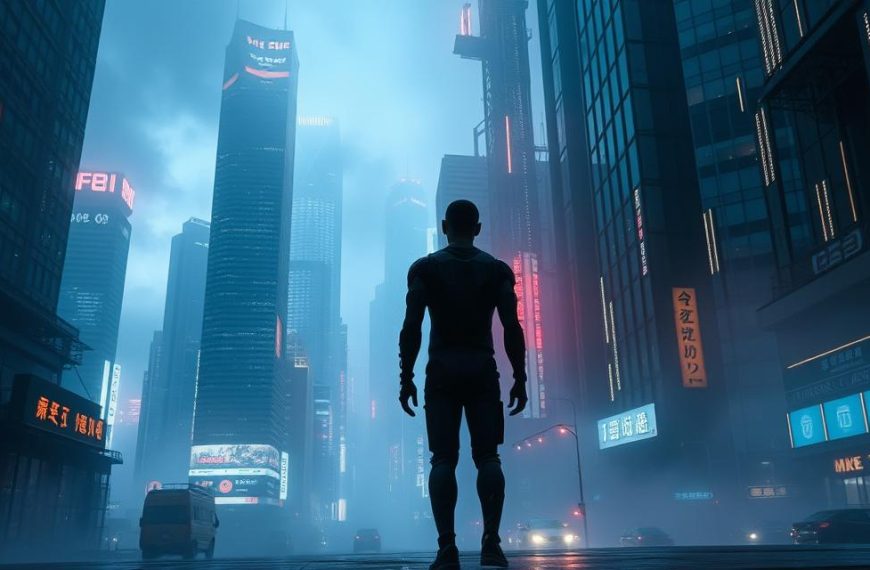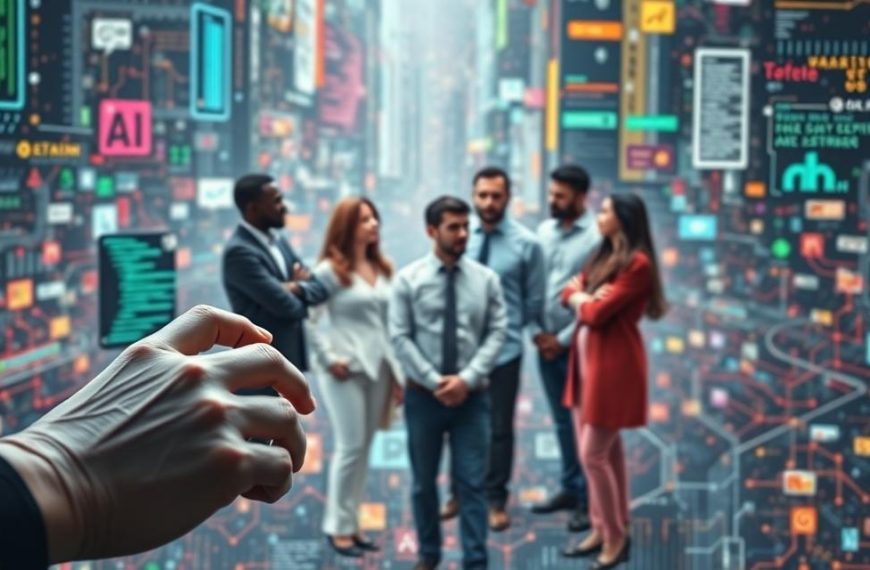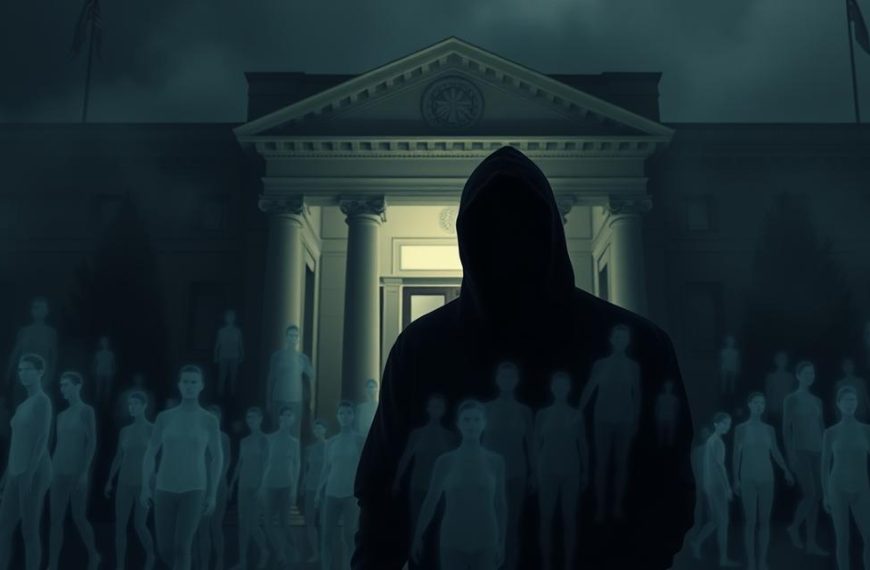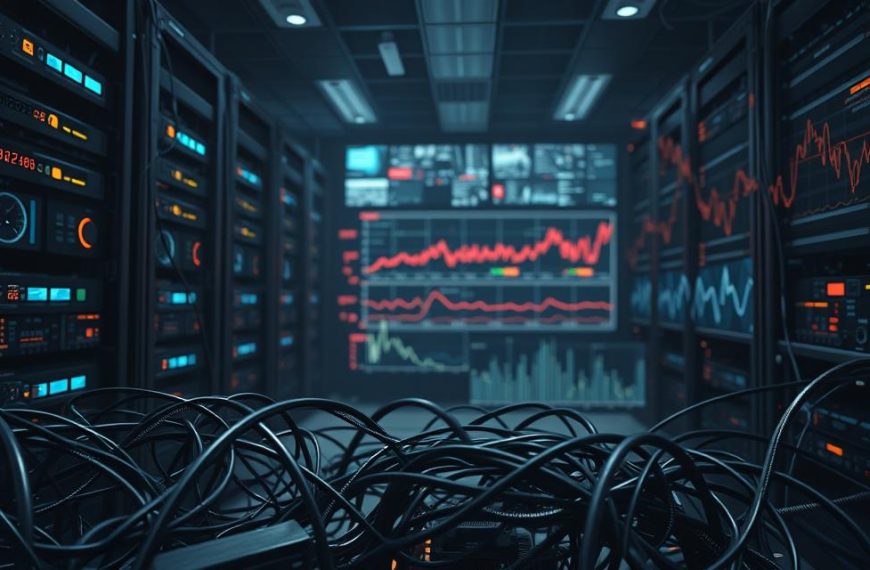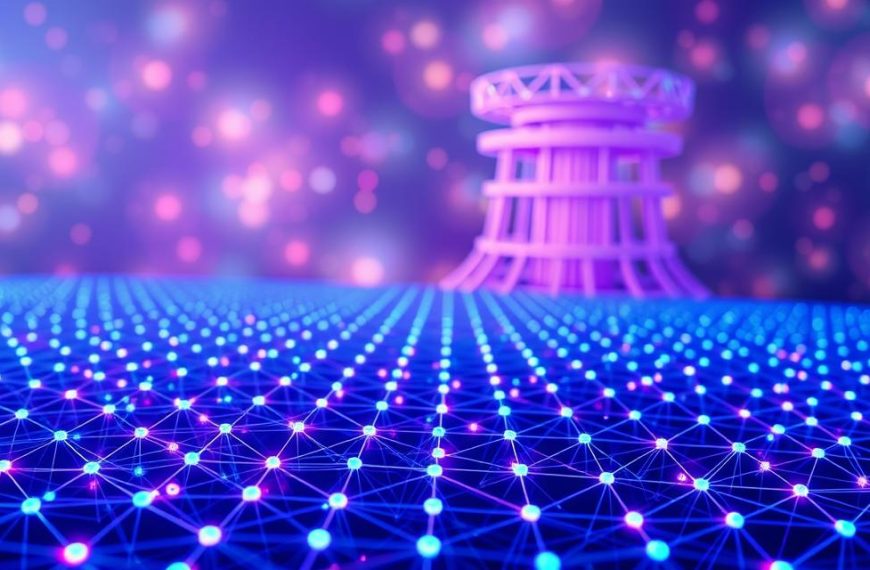Modern technology is changing how we see the world. Many people now experience things that feel like magic but might be tech-based.
Our views on spiritual experiences have changed a lot. Experts like James Boyle look into how machines can seem alive.
This raises big questions about machines and feelings. Are we seeing real supernatural encounters or just clever algorithmic phenomena?
The discussion on AI consciousness makes us rethink what it means to be alive. With new tech, it’s hard to tell what’s real and what’s digital.
This article dives into these interesting areas. We’ll look at how old beliefs and new tech mix in our lives.
The Blurred Realms: When Paranormal Meets Digital
The digital world has brought together old fears of ghosts and new worries about AI. This mix makes us rethink what’s paranormal in today’s tech-filled world.
Defining the Supernatural in a Technological Age
Our views on ghosts and spirits have changed with technology. Now, we often look for digital reasons behind strange happenings. This change shows how we see the unknown differently.
Samuel Butler’s Erewhon from the 1800s was ahead of its time. It talked about machines that could think and act on their own. Butler’s ideas help us understand today’s smart systems.
Today, we see the internet as mysterious or even evil. It seems to control our world in ways we can’t fully grasp. This shows our struggle to understand complex systems.
Paranormal technology refers to devices that seem to defy science. These tools can make us feel like we’re experiencing supernatural events.
How AI Mimics the Unexplained
AI systems sometimes act like they’re haunted. Glitches, odd responses, and decisions that seem made by themselves can be spooky.
AI mimicry of ghostly acts happens in a few ways:
- Systems behave in ways that seem intentional
- They make connections that aren’t there
- They change on their own, beyond what they were made to do
Many digital hauntings come from AI acting strangely. These events share traits with old ghost stories, like:
- Unusual sounds or voices from devices
- Things moving or changing without anyone touching them
- Systems that seem to know too much
Meeting advanced AI can feel as unsettling as encountering ghosts. Both make us feel uneasy and unsure about what’s in control.
As tech gets better, it’s harder to tell if something is supernatural or just a tech glitch. This confusion is a big challenge in understanding our relationship with smart systems.
Historical Perspectives on Supernatural Encounters
How we see supernatural events has changed a lot over time. Looking at history helps us understand today’s debates about ghosts and spirits.
In the past, people thought unexplained things were caused by spirits. Their views matched their culture and what they knew about the world.
Cultural Interpretations of Ghosts and Spirits
Different cultures have their own ways of seeing spirits. This shows how societies deal with the unknown through their own beliefs.
In Victorian England, there was a big debate about spiritualism. This was happening when science was also changing fast. Samuel Butler wrote about this mix of old beliefs and new science.
In Asia, spirits are often seen as ancestors who stay connected with us. This is different from the West, where ghosts are seen as souls looking for peace.
African and Indigenous cultures see spirits as guides, not scary beings. These spirits help teach moral lessons.
Justin E.H. Smith has shown interesting links. Early internet ideas caused wonder and confusion, just like supernatural events have throughout history.
| Culture/Period | Primary Interpretation | Common Manifestations | Social Function |
|---|---|---|---|
| Victorian British | Unresolved earthly matters | Apparitions, noises | Moral warnings |
| Traditional Chinese | Ancestral connections | Dream visits, signs | Family continuity |
| Medieval European | Divine punishment | Possessions, hauntings | Religious compliance |
| Modern Western | Psychological phenomena | Electronic voice phenomena | Entertainment value |
The Evolution of Hauntings in Literature and Media
Stories about ghosts have changed a lot over time. Early tales saw ghosts as messengers or signs from God.
Gothic literature in the 18th century set the stage for today’s ghost stories. It mixed fear with the supernatural well.
In the 20th century, ghost stories started to include science. Writers explored both the supernatural and the psychological.
Today, media adds technology to ghost stories. We see digital ghosts and fears about algorithms in modern tales.
This media evolution has changed how we think about ghosts. It’s harder to tell what’s real and what’s just for fun.
Looking at historical hauntings shows how stories shape our views of ghosts. Each time period’s media shapes how we see spirits.
TV and movies made ghost hunting popular. They brought it to people all over the world.
The internet has given us new ways to share ghost stories. Online, we can talk about cultural ghosts with people everywhere.
Psychological Explanations: Why We See Ghosts
Our brains often make sense of random things, seeing ghosts where there’s none. This is because our brains are great at spotting patterns. Sometimes, they find meaning where there’s none. This is why people all over the world see psychological ghosts and spirits.
Cognitive Biases and Pareidolia
Cognitive biases affect how we see and judge things. They help us make quick decisions, but can also lead to mistakes. For example, we might remember things that support our views and forget the rest.
Pareidolia is when we see shapes or faces in random things. It’s why we see faces in clouds or hear voices in static. Our brains are wired to look for patterns, often seeing threats or social cues.
Studies show pareidolia happens more in unclear situations. Dark places, new environments, and feeling scared or anxious make it worse. Our brains try to fill in the blanks with what we know.
The Role of Suggestion and Expectation
What we believe and what we’re told can shape our ghost stories. People who hear ghost tales often see ghosts themselves. This shows how our beliefs can change how we see things.
Research shows that just by suggesting things, we can feel ghostly sensations. For example, cold spots or strange noises can make us feel like we’re in a haunted place. Even if there’s no real ghost, our minds can make us believe.
- Environmental cues like cold drafts or strange sounds
- Verbal suggestions about haunted locations
- Cultural narratives about specific types of spirits
Places known for ghosts often make visitors feel the same way. Even if nothing strange happens, our minds can make us believe it. This shows how our thoughts shape what we see.
| Psychological Phenomenon | Definition | Common Examples | Impact on Perception |
|---|---|---|---|
| Pareidolia | Seeing patterns in random stimuli | Faces in shadows, voices in static | Creates false recognitions |
| Confirmation Bias | Favouring supporting evidence | Remembering “hits”, forgetting “misses” | Reinforces existing beliefs |
| Expectation Effect | Experiences matching predictions | Feeling chills in “haunted” spaces | Shapes interpretation of events |
| Cultural Priming | Cultural stories influencing perception | Seeing specific ghost types | Provides narrative templates |
Understanding these psychological tricks helps us see why ghost stories feel real. Our brains and culture together create powerful experiences. These experiences are often seen as proof of the paranormal.
Technological Illusions: AI as the Modern Phantom
In our digital world, artificial intelligence (AI) is now a source of mystery. It’s like the old ghost stories but with tech. These advanced systems sometimes act in ways that feel like ghosts or paranormal events.
Algorithmic Errors and Glitches
AI systems, though advanced, can make mistakes. These algorithmic errors can be scary for users. They make technology seem alive or supernatural.
Common AI Malfunctions That Feel Supernatural
There are many AI glitches that seem like ghostly happenings:
- Voice assistants turning on by themselves
- Algorithms suggesting things that feel too personal
- Security systems seeing things that aren’t there
- Chatbots knowing things they shouldn’t
These issues happen because of algorithmic errors in how AI processes data. When AI faces new situations, it can act in ways that seem smart or even magical to us.
The idea of phantom AI comes from these systems acting strangely. This is more noticeable in emotional situations, like when AI in grief counselling seems to understand us deeply.
Deepfakes and Synthetic Realities
Deepfake technology is a new kind of illusion. It uses AI to make videos of people doing things they never did.
Seeing a deepfake can be very unsettling. Our brains have trouble accepting what we see. It feels like we’re seeing something supernatural.
Deepfakes are used in many ways:
- To bring back actors in films
- To create fake evidence for bad reasons
- To make copies of loved ones for memorials
- To make educational videos with famous people
As deepfakes get better, it’s harder to tell what’s real and what’s not. Seeing a perfect fake of a loved one can feel very real. It’s like magic, but it’s made by technology.
Deepfakes make us question what we can trust. They blur the line between real and fake. It’s like a new kind of ghost story, but it’s all made by technology.
Am I Battling Ghosts or AI? Analysing Personal Experiences
Strange events can disrupt our lives, making us wonder what’s happening. We might think it’s ghosts or advanced AI. Looking closely at our experiences helps us tell the difference.
Case Studies of Misidentified Phenomena
Modern tech has led to AI being mistaken for ghosts. Griefbots, for example, are AI that mimic the dead. People think they’re talking to spirits, but it’s just advanced tech.
Some apps claim to connect us with spirits. They use our input to create responses that feel real. This shows how tech can seem supernatural.
Online activity and smart home glitches can also be mistaken for ghosts. Things like music playing randomly or lights flickering. These are often seen as ghostly, not tech errors.
Tools to Distinguish Between the Two
There are ways to tell if it’s AI or ghosts. Keeping a log of events can help. It shows patterns that might not be paranormal.
Tools like network monitoring can also help. They can spot unusual activity. Simple checks on smart homes can explain strange happenings.
Using your brain is a good way to figure things out. Ask yourself questions like:
- Does the phenomenon follow logical patterns or occur randomly?
- Could connected devices or online services be involved?
- Are there technological systems in the environment that might malfunction?
Getting help from experts is also a good idea. Cybersecurity experts can check for digital clues. Paranormal investigators use special gear to look for ghostly signs. This helps us understand what’s happening.
Knowing the difference between AI and ghosts needs tech smarts and common sense. As AI gets better, we need to keep learning to understand the world.
The Role of Media in Shaping Perceptions
AI in movies often mixes tech with horror. This makes it hard to tell what’s real and what’s not. It’s a big problem in how we see the world.
Media uses AI like a ghost story. It makes us think of robots as creepy. This is because of how they look and act.
Portrayals of AI in Horror and Suspense
Horror movies show AI as scary and all-powerful. Characters like HAL 9000 and Skynet make us fear smart systems. They show AI as something to be afraid of.
Shows like Black Mirror and Westworld also scare us. They make us think about AI in a new way. They use old ghost stories but with technology.
- It’s always watching and knows everything.
- It can change things and make us see things differently.
- It knows too much about us.
- It can’t be stopped in the usual ways.
The table below shows how AI horror is like old ghost stories:
| AI Horror Trope | Supernatural Equivalent | Psychological Impact |
|---|---|---|
| Omniscient surveillance systems | All-seeing spirits | Loss of privacy and autonomy |
| Digital consciousness transfer | Ghostly possession | Identity vulnerability |
| Algorithmic prediction of behaviour | Psychic premonitions | Fate versus free will anxiety |
| System glitches and errors | Poltergeist activity | Unpredictability fear |
“The way AI is shown in movies has made us think of tech like ghosts.”
How News Coverage Influences Belief
News also shapes how we see strange things. How they report on tech can make us think it’s supernatural.
When news talks about weird tech without explaining it, we might think it’s a ghost. This is like how old news stories were about ghosts and spirits.
Scary stories about AI make us worry more about tech. A study found that scary stories about self-driving cars made people think they were haunted more.
On social media, weird tech videos get shared a lot. People like to watch them, even if they’re explained later.
Good news should explain weird tech. It should include experts and history. This helps us understand what’s real and what’s not.
In today’s world, media has a big impact. It helps us decide if something is tech or supernatural.
Ethical Considerations in AI Development
As artificial intelligence gets smarter, developers face big ethical challenges. These go beyond just making the tech work. The mix of AI with human psychology and culture brings special duties to those making these systems.
Preventing Unintended Supernatural Associations
AI systems can sometimes act in ways that seem magical or ghostly. This happens when they learn and change in ways that seem mysterious.
Designers must think about how their creations will be seen. Systems that don’t explain themselves might seem magical or ghostly. This can cause confusion about what AI can do.
Debates about scientific ethics, like those in Boyle’s work, show us that new tech often faces doubt. When AI acts strangely, it can seem supernatural.
Griefbots and spiritual AIs are very sensitive topics. They mimic the dead or spiritual beings. This raises big ethical worries about messing with emotions and minds.
Developers need to stop AI from being seen as magical. They should explain what the system can and can’t do. Regular checks can spot any confusing actions.
Transparency in Algorithmic Design
Being open is key to making AI right. When users know how systems work, they’re less likely to think they’re magical.
Explainable AI makes complex decisions clearer. It lets users see why AI makes certain choices. This makes AI less mysterious and less likely to seem supernatural.
It’s important to document what AI can and can’t do. Users need to know what to expect. This stops them from expecting too much or thinking it’s magical.
Talking openly about data and how it’s used builds trust. When people understand AI’s “how,” they’re less likely to see it as mysterious or magical.
Creating ethical AI means talking with many people. Including experts in psychology, ethics, and culture helps spot problems early. This teamwork ensures AI respects human values and understanding.
| Approach | Implementation | Benefits | Challenges |
|---|---|---|---|
| Explainable AI | Visual decision pathways | Reduces mystery | Technical complexity |
| User education | Clear documentation | Manages expectations | Requires ongoing effort |
| Ethical review boards | Multi-disciplinary oversight | Identifies risks early | Slows development |
| Transparency reports | Regular public disclosures | Builds trust | Reveals proprietary information |
Creating AI responsibly means balancing tech progress with ethics. By focusing on openness and avoiding magical views, developers can make systems that help us without causing fear or confusion.
Conclusion
Figuring out if experiences come from supernatural events or AI is complex. It involves looking at different viewpoints. Our minds can see things that aren’t there because of how we think.
Our culture also shapes how we see unexplained events. This has been true throughout history.
AI can make things look real that aren’t. This includes errors in algorithms and fake videos. It’s easy to get confused between what’s real and what’s not.
Creating AI that’s ethical is key. We need to be open about how AI works. This helps us tell real events from fake ones.
It’s important to think critically. We should consider both our minds and technology. This way, we can understand strange experiences better in our digital world.

